England, early 17th century.
Measurements: Ring size O (UK) / 7 (US) / 55 (EU)
Weight: 1.67 grams
Maker’s mark: R (inside the band)
This elegant gold betrothal ring is decorated externally with finely worked polychrome translucent enamels. A heart clasped by two gloved hands forms the principal motif, the white lace cuffs reflecting contemporary fashion and conveying refinement and intention. The hoop is further enriched with red and green floral sprays and a neatly executed lover’s knot, all set against a textured gold ground that heightens the visual contrast. The enamels retain a pleasing brightness, lending the ring an uncommon liveliness.
Inside the band is the posy thy constancie, my felicitie, a succinct and affectionate declaration characteristic of 17th-century sentimental exchange. Posy rings—named after the “poesy” or short poetic motto engraved within—emerged in the late medieval period and reached their greatest popularity in the 16th and 17th centuries. Their inscriptions, often derived from manuscript commonplace books, contemporary verse, or French and English courtly sayings, expressed ideals of fidelity, constancy, and mutual affection. Typically plain on the exterior, posies were intended as intimate messages known chiefly to the giver and the wearer. Enamelled examples such as this represent a more elaborate and decorative subset, combining overt symbolism with the private sentiment of the inscription. The maker’s mark R indicates the work of an English goldsmith engaged in crafting such personal tokens of commitment.


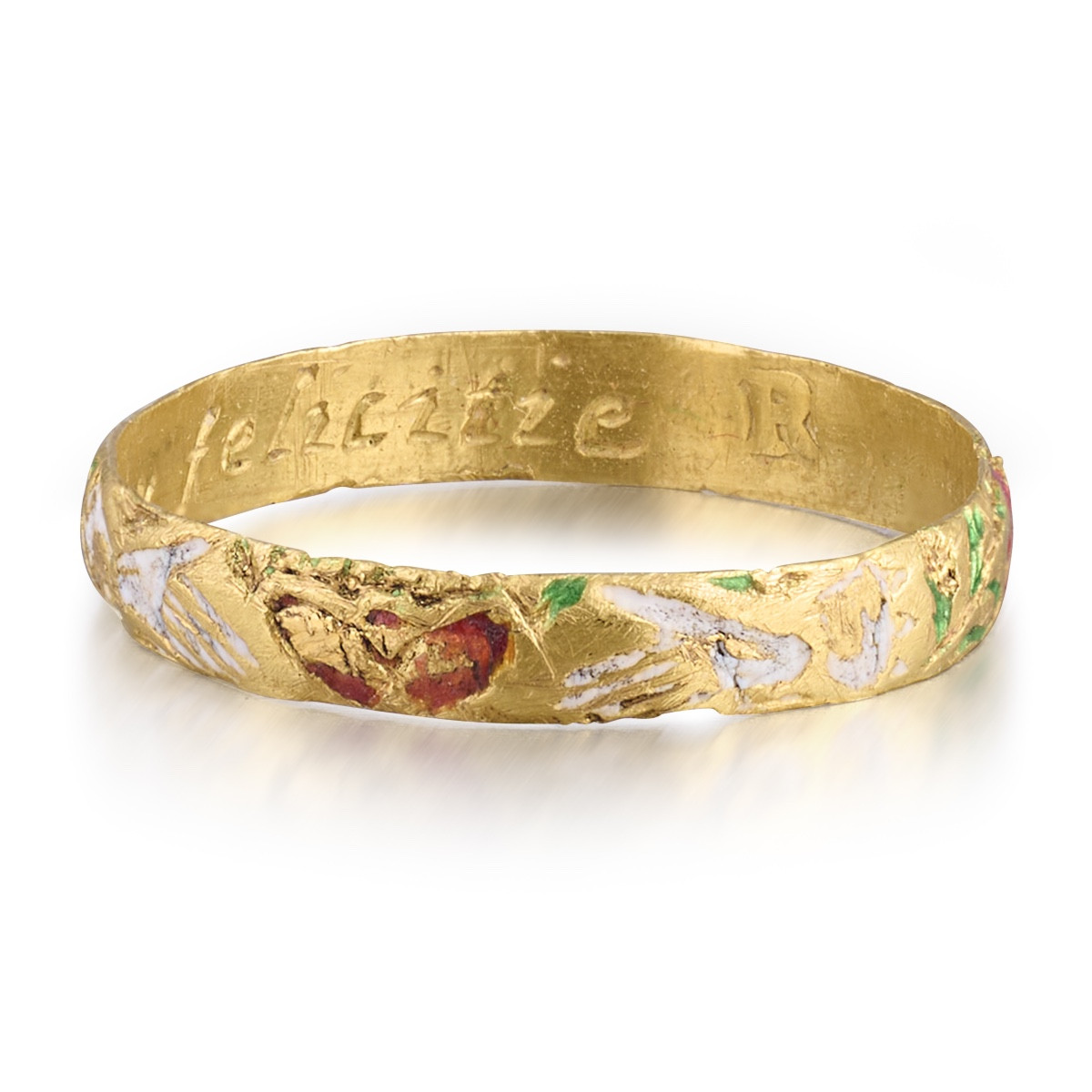







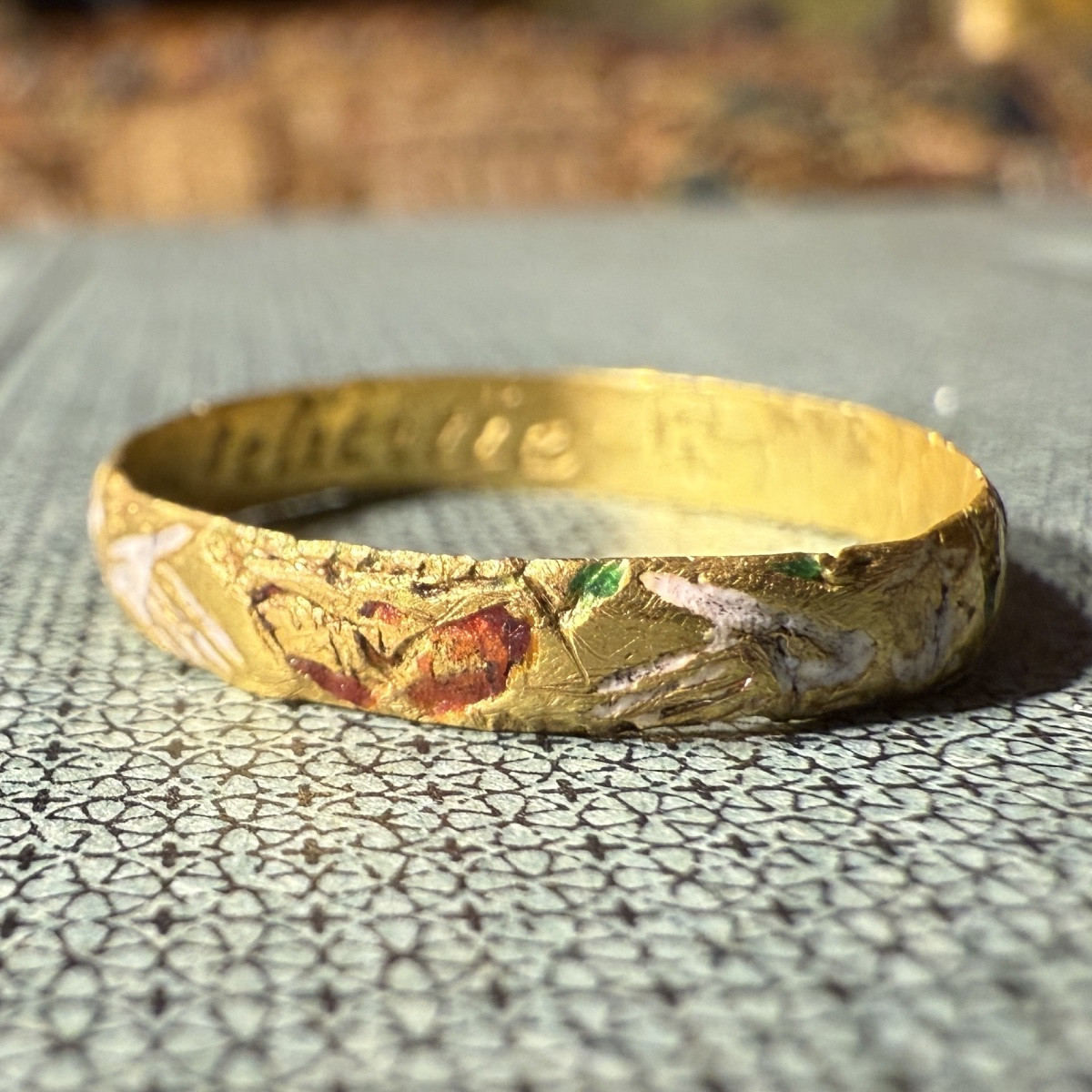


















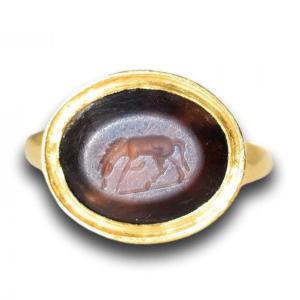




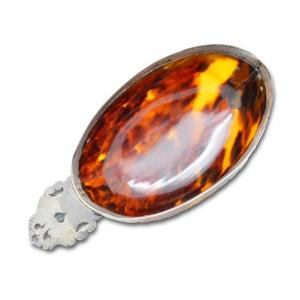











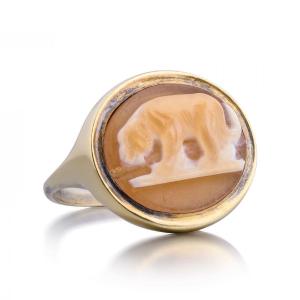



 Le Magazine de PROANTIC
Le Magazine de PROANTIC TRÉSORS Magazine
TRÉSORS Magazine Rivista Artiquariato
Rivista Artiquariato